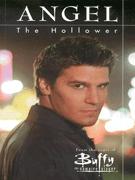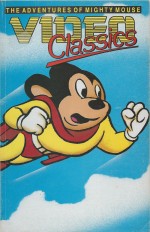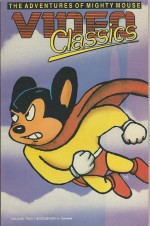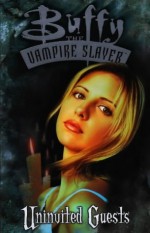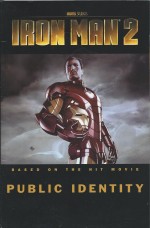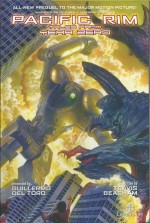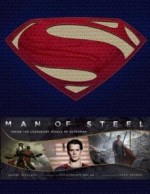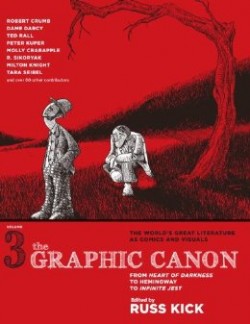
By various, edited by Russ Kick (Seven Stories Press)
ISBN: 978-1-60980-380-3
Once upon a time in the English-speaking world, nobody clever, educated or grown up liked comics. Now we’re an accredited really and truly art form and spectacular books like this can be appreciated…
The Graphic Canon is an astounding literary and art project, instigated by legendary crusading editor, publisher, anthologist and modern Renaissance Man Russ Kick, which endeavours to interpret the world’s great books through the eyes of masters of crusading sequential narrative in an eye-opening synthesis of modes and styles.
The project is divided into three periods roughly equating with the birth of literature and the rise of the modern novel (From the Epic of Gilgamesh to Shakespeare to Dangerous Liaisons covered literature from ancient times to the end of the 1700s, whilst Kubla Khan to the Brontë Sisters to The Picture of Dorian Gray concentrated on the 19th century), and this third volume concentrates on the astonishing variety and changes which hallmarked the socially revolutionary 20th century in stories and poetry.
Rather than simply converting the stories the artists involved have been given the freedom to respond to texts in their own way, producing graphics – narrative or otherwise, sequential or not – to accompany, augment or even offset the words before them and the result is simply staggering…
Make no mistake: this is not a simple bowdlerising “prose to strip†exercise like generations of Classics Illustrated comics, and you won’t pass any tests on the basis of what you see here. Moreover these images will make you want to re-read the texts you know and hunger for the ones you haven’t got around to yet.
They certainly did for me…
Each piece is preceded by an informative commentary page by Kick, and the wonderment begins with ten illustrations by Matt Kish synthesising the dark delerium of Joseph Conrad’s Heart of Darkness, after which a seminal and scandalously revolutionary tale of sexual oppression and gender politics is revived in Rebecca Migdal’s moodily monotone comics adaptation of The Awakening by Kate Chopin, whilst Tara Seibel visually précis’ portions of Sigmund Freud’ discredited masterpiece The Interpretation of Dreams.
No matter how big a fan, you will never have seen anything like the terrifying photo-dioramas by Graham Rawle reinterpreting The Wonderful Wizard of Oz by L. Frank Baum, whilst H. G. Wells’ designer drug fantasy ‘The New Accelerator’ is treated to a spookily traditional strip adaptation by Cole Johnson, after which the Shoujo manga stylings of Sonia Leong brilliantly subvert the hilariously barbed social satire of Edwardian Dandy ‘Reginald’ as written by the sublimely acerbic H.H. Munro AKA “Sakiâ€.
Hard on the heels of a Three Panel Review of A Room with a View by E.M. Forster as limned by Lisa Brown, Maxim Gorki’s transcendent ‘Mother’ – paean to the spirit of revolution – is perfectly encapsulated by Stephanie McMillan, and cartoonist Frank Hansen offers a radical interpretation of Rudyard Kipling iconic poem ‘If -‘ before Jack London’s autobiographical warning of the perils of drink are revealed in John Pierard’s terrifying excerpt, adapted from John Barleycorn.
James Joyce’s mesmeric short story ‘Araby’ (from Dubliners) is beguilingly handled by Annie Mok, after which Franz Kafka’s first entry is hilariously amalgamated with the trappings of Charlie Brown when R. Sikoryak tackles ‘The Metamorphosis’ as ‘Good Old Gregor Brown’.
Reason then is restored courtesy of Caroline Picard in her seductive selective adaptation of The Voyage Out by Virginia Woolf.
Anthony Ventura offers a bold but traditional illustrated spread for T. S. Elliot’s ‘The Love Song of J. Alfred Prufrock’ whilst Bishakh Som’s alluring monochrome sequential narrative adaptation of the poem ‘The Mowers’ by D. H. Lawrence is balanced by the illustrator’s pastel coloured fantasy treatment of the moving ode ‘Sea Iris’ by H. D. (Hilda Doolittle).
‘A Matter of Colours’ is a very rare early vignette by Ernest Hemingway which becomes a brutally funny pugilistic shaggy dog story courtesy of comicbook artist Dan Duncan, whilst Matt Weigle’s brilliantly light touch captures the wild spirit of a select string of pronouncements from Kahlil Gibran’s spiritual/philosophical landmark The Madman. Sherwood Anderson’s classical elegiac American small-town short-story collection Winesburg, Ohio is movingly represented by a brittle interpretation of ‘Hands’ by Ted Rall, after which Celtic mystic W. B. Yeats’s first selection is a ghostly, nationalistic love-fable ‘The Dreaming of the Bones’ movingly adapted by Lauren Weinstein. Then the astounding towering presence of Sidonie-Gabrielle Colette is commemorated with a portrait by Molly Crabapple depicting the immortal Chéri.
Drama of manners The Age of Innocence (Edith Wharton) is précised through six single page chapters by C. Frakes, before Wilfred Owen’s stunning condemnation of military incompetence ‘Dulce et Decorum Est’ is chillingly adapted by Jason Cobley, John Blake, Michael Reid & Greg Powell, after which Anthony Ventura concocts an eerie spread to visualise ‘The Second Coming’ by W. B. Yeats.
Joy Kolitsky adapts ‘The Penitent’ and ‘The Singing-Woman from the Wood’s Edge’, a brace of scandalous poems by Renaissance Woman of Letters Edna St. Vincent Millay, whilst ideological comics guru Peter Kuper provides two re-coloured epigrammatic Kafka yarns – ‘The Top’ and ‘Give it Up!’ – which first appeared in the cartoonist’s own Give It Up collection – and this section concludes with another Lisa Brown Three Panel Review telling you all you need to know about To the Lighthouse by Virginia Woolf.
Celebrated African American poet and author Langston Hughes wrote ‘The Negro Speaks of Rivers’ in 1920 when he was 18 years old, and Jenny Tondera’s evocative art montage captures perfectly the immense power of the poem – which has only grown more evocative in the decades since it was first published – after which graphic stylist Laurence Tooks tackles with dark aplomb and mordant grace the infamous W. Somerset Maugham short story ‘Rain’.
Ulysses by James Joyce is arguably the greatest and most influential novel of the 20th century and is here approached in two entirely different ways by creators working twenty years apart. Firstly Robert Berry & Josh Levitas, who are in the process of adapting to comics the entire sprawling, dawdling epic of Leopold Bloom and Stephen Dedalus in painted sections periodically posted on the internet and in Apps, are represented here by a 15-page portion regarding Calypso, after which self-publisher/cartoonist David Lasky’s 36-panel monochrome mini-comic abbreviation from 1993 is reproduced in a slightly modified layout covering the tale in a way which has become a classic in its own right.
‘Living on $1000 a Year in Paris’ by Ernest Hemingway was originally a piece of journalism the two-fisted author wrote for the folks back home in 1922, affectingly adapted here by Steve Rolston, after which insurance salesman and key Modernist poet Wallace Stevens’ intriguing ‘The Emperor of Ice-Cream’ is illustrated by Ventura, whilst Kate Glasheen pulls out all the stops for a staggering interpretation of William Faulkner’s lost short story ‘The Hill’.
J. Ben Moss adapts the pivotal moment of Herman Hesse’s seminal spiritual novel Siddhartha, and Chandra Free imaginatively illumines sections of ‘The Waste Land’ by T. S. Eliot, before F. Scott Fitzgerald’s The Great Gatsby is visually summarised by Tara Seibel and Pierard accesses a key scene in Hesse’s other masterpiece Steppenwolf. Lisa Brown aptly and hilariously reduces D. H. Lawrence’s last novel Lady Chatterley’s Lover to three stunning panels, whilst Robert Goodwin similarly abridges The Sound and the Fury by William Faulkner, but ‘Letters to a Young Poet’ by Rainer Maria Rilke is possibly the boldest response in this tome, presenting excerpts of text in a breathtaking display of typographical design dexterity by James Uhler.
Dashiell Hammett’s genre classic The Maltese Falcon then hurdles the literary barrier in a superb, wordless pastiche from T. Edward Bak, whilst Carly Schmitt contributes a hypnotic portrait of blessed-out Lenina from Brave New World by Aldous Huxley, after which Milton Knight rapturously adapts Poker! – a lost play by recently rediscovered African American literary pioneer Zora Neale Hurston.
Black Elk Speaks by Black Elk & John G. Nelhardt is illustrated by Molly Kiely, mightily evoking the autobiographical words and grand vision of the famed Lakota shaman, after which the Billie Holliday Jazz standard ‘Strange Fruit’ – which started life as the poem “Bitter Fruit†by Lewis Allan (AKA American Communist Abraham Meeropol) is here adapted into just as potent and heartfelt a response to Southern lynchings in John Linton Roberson’s sombre, silent strip.
A brooding, Existentialist selection of pages adapted by Robert Crumb from Jean-Paul Sartre’s Nausea and originally published in Hup #3, 1989, is followed by Lisa Brown’s Three Panel Review of Ian McEwan’s Atonement, whilst Liesbeth De Stercke’s wordless adaptation of John Steinbeck’s The Grapes of Wrath takes all the time it needs to drive home its still-telling point.
Jorge Luis Borge wrote hundreds of short stories and vignettes called “Ficcionesâ€. His prodigious output and incredible books largely consist of stringing these story-lets together.
The Three Stories (‘Library of Babel’, ‘The Garden of Forking Paths’ and ‘The Circular Ruins’) featured here are realised as a trio of stunning pencil illustrations by Kathryn Siveyer, after which Juan Carlos Kreimer & Julian Aron contribute a crucial scene from their Argentinean adaptation (translated here by Dan Simon) of Albert Camus’ The Stranger, whilst photographic designer Laura Plansker interprets three life-altering moments from George Orwell’s mythic masterpiece Animal Farm.
The impossibly multi-faceted and obfuscatory oeuvre of Flannery O’Connor is represented here by ‘The Heart of the Park’ (later forming part of her 1952 novel Wise Blood) and the cryptic nature of her prose is transformed into silent symbology by artist Jeremy Eaton, whilst an eye-popping montage by Lesley Barnes captures the oppressive hopelessness of Orwell’s Nineteen Eighty-Four.
Nelson Algren’s dark, critical, drug-culture alarm-raising Proletarian novel The Man with the Golden Arm enjoys a miasmic interpretation thanks to Eaton, after which some of the early writings of reclusive savant Thomas Pynchon are illustrated by Brendan Leach in ‘The Voice of the Hamster’, and Gustavo Rinaldi sums up Waiting For Godot by Samuel Beckett in one intense dose of drawing, after which Andrea Arroyo paints a beguiling picture to define Gabriela Mistral’s poem ‘The Dancer’ and cartoonist Trevor Alixopulos demonstrates why Lord of the Flies by William Golding is about but not necessarily for kids…
Aldous Huxley’s treatise on the effects of mild-altering drugs The Doors of Perception is hallucinogenically rendered by Pierard, whilst Sally Madden proves – with edited pictorial highlights – why Lolita by Vladimir Nabokov is such a cruelly misunderstood tale.
Seibel then provides a graphic biography of literary pioneers William S. Burroughs, Diane di Prima, Jack Kerouac and Allen Ginsberg in Four Beats art, whilst Kerouac’s On the Road is sampled by artist Yeji Yun, and Emelie Östegren pictorialises a free-floating chunk of Burroughs’ Naked Lunch.
PMurphy offers a silent strip summarizing One Flew over the Cuckoo’s Nest by Ken Kesey, Ellen Lindner illustrates ‘The Bell Jar’ by Sylvia Plath, and Juliacks adapts the story of ‘Georgette’ from the still-shocking and controversial Last Exit to Brooklyn by Hubert Selby Jr.
Portions of Diaries by intellectual and sexual free thinker Anaïs Nin were subversively limned by Mardou years ago and are happily included here, after which sections of Mikhail Bulgakov’s life-threatening supernatural satire on Stalinist Russia The Master and Margarita are tellingly adapted by Andrzej Klimowski & Danusia Schejbal, whilst Gabriel Garcia Márquez’ groundbreaking One Hundred Years of Solitude is exemplified by a brace of illustrations from Yien Yip.
Semi-Surrealist novel In Watermelon Sugar by Richard Brautigan is represented by an electrifying painting from Juliacks, whilst Pynchon’s Gravity’s Rainbow – elsewhere fully translated into 760 images by Zak Smith under the title Pictures Showing What Happens on Each Page of Thomas Pynchon’s Novel Gravity’s Rainbow – is summarised here with 28 of the best of them.
J. G. Ballard’s sinister, seductive science fiction shocker Crash is gorily adapted by Onsmith, whilst Andrice Arp preferred a single image to champion Donald Barthelme’s ode ‘I Bought a Little City’ and Annie Mok produced a double page spread of extreme intensity to illustrate Raymond Carver’s moving ‘What we Talk About when we Talk About Love’ .
An early book from the legendary Kathy Acker, Blood and Guts in High School, generated a captivating gallery of powerful images by Molly Kiely; a response also elicited by Dame Darcy to encapsulate the savage effect of Cormac McCarthy’s brutal novel Blood Meridian.
Foucault’s Pendulum by Umberto Eco prompted Julia Gfrörer to turn ‘The Chymical Wedding’ sequence into an eerie, wordless strip, whilst post-Modernist epic Wild at Heart by Barry Gifford is completely covered by Rick Trembles in four high-octane pages.
Ben Okri’s Magical Realist epic The Famished Road becomes a series of dreamy delusions courtesy of Aidan Koch, whilst Rey Ortega takes a more light-hearted approach delineating three of Einstein’s Dreams from the deliciously smart and whimsical semi-biography by Alan Lightman.
Ortega’s interpretation of a key moment from the miasmic Japanese text The Wind-Up Bird Chronicle by Haruki Murakami is far less jovial, however, and this rollercoaster ride through modern reading ends with five berserk images from Benjamin Birdie inspired by the chimerical and bombastic social commentary on what’s wrong with America as perceived by tragic genius David Foster Wallace in Infinite Jest.
Further Reading by Jordyn Ostroff then explains just why you should read the actual books, poems and plays these graphic milestones based upon – and don’t whine; you must – whilst after one more Three Panel Review by Lisa Brown (Death in Venice by Thomas Mann), this astounding accomplishment ends with biographies of Contributors, Acknowledgements, Credits & Permissions and a full Index to volume 3.
I’ve dashed through this but you can and should linger, dipping as fancy or curiosity takes you, savouring the magnificent blend of imperishable thoughts and words and sublimely experimental pictures.
This sort of book is just what the art form comics needs to grow beyond our largely self-imposed ghetto, and anything done this well with so much heart and joy simply has to be rewarded.
© 2013 Russ Kick. All work © individual owners and copyright holders and used with permission. All rights reserved.
